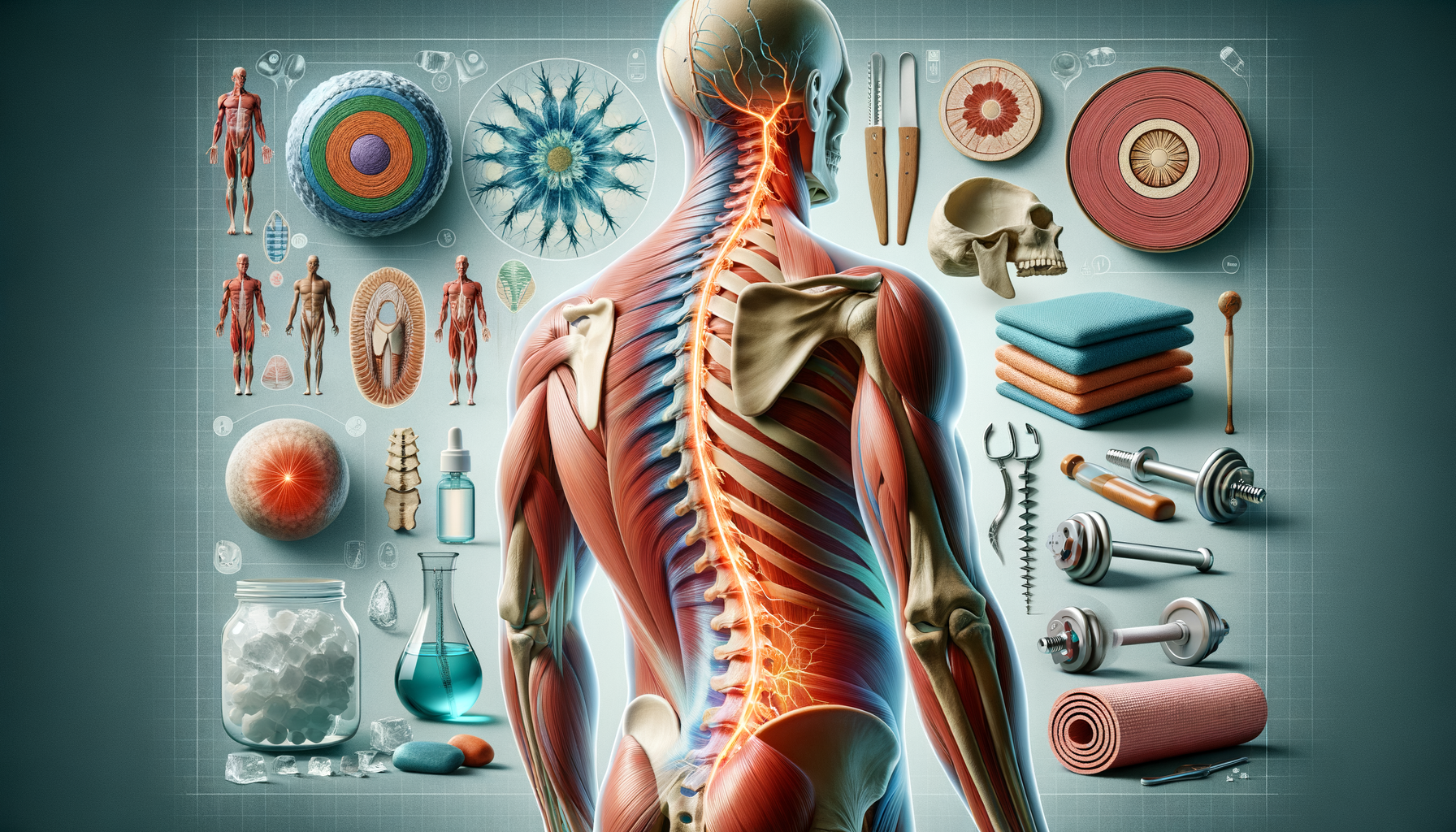What is Sciatica and What Causes It?
Sciatica is a condition characterized by pain that radiates along the path of the sciatic nerve, which extends from the lower back through the hips and buttocks and down each leg. This nerve is the longest in the body, and when it becomes irritated or compressed, it can lead to significant discomfort. The most common cause of sciatica is a herniated disk in the spine, which puts pressure on the nerve. Other causes can include bone spurs on the spine, spinal stenosis, or even a tumor compressing the nerve. In some cases, pregnancy can also lead to sciatica due to the additional weight and pressure on the spine.
The symptoms of sciatica can vary, but typically include pain that radiates from the lower back to the buttock and down the back of the leg. This pain can range from mild to severe and is often described as a sharp, burning sensation. Some individuals also experience numbness, tingling, or muscle weakness in the affected leg or foot. The pain can worsen with prolonged sitting, standing, or sudden movements.
Understanding the underlying causes of sciatica is crucial for effective treatment and management. While some cases resolve on their own with time and rest, others may require more targeted interventions to alleviate symptoms and improve quality of life.
How to Relieve Sciatica Pain at Home
Managing sciatica pain at home involves a combination of self-care strategies that can help alleviate discomfort and promote healing. One of the most effective ways to relieve sciatica pain is through the application of heat or cold therapy. Applying a cold pack to the affected area for 15-20 minutes several times a day can help reduce inflammation and numb the pain. After a few days, switching to a heating pad or warm compress can help relax tight muscles and improve blood flow to the area.
Over-the-counter pain relievers, such as ibuprofen or acetaminophen, can also provide temporary relief from sciatica pain. However, it’s important to use these medications as directed and consult with a healthcare professional if the pain persists.
Maintaining a regular exercise routine is crucial for managing sciatica symptoms. Gentle activities such as walking, swimming, or yoga can help keep the muscles flexible and reduce pressure on the sciatic nerve. Additionally, practicing good posture and avoiding prolonged periods of sitting or standing can help prevent further irritation of the nerve.
Incorporating these home remedies into your daily routine can significantly reduce sciatica pain and improve overall mobility. However, if the pain is severe or persistent, it’s important to seek medical advice for further evaluation and treatment options.
Recommended Exercises for Sciatica Nerve Pain
Exercise plays a vital role in managing sciatica nerve pain by strengthening the muscles that support the spine and improving flexibility. Here are some recommended exercises that can help alleviate sciatica symptoms:
- Knee-to-Chest Stretch: Lie on your back with your knees bent and feet flat on the floor. Slowly bring one knee toward your chest, holding it with both hands for 20-30 seconds. Repeat with the other leg. This stretch helps relieve tension in the lower back and glutes.
- Piriformis Stretch: Sit on the floor with your legs extended. Cross one leg over the opposite thigh, keeping the foot flat on the ground. Gently pull the crossed knee toward your chest, holding for 20-30 seconds. This stretch targets the piriformis muscle, which can become tight and press on the sciatic nerve.
- Seated Spinal Twist: Sit on a chair with your feet flat on the floor. Gently twist your upper body to one side, holding the back of the chair for support. Hold the stretch for 20-30 seconds, then repeat on the other side. This exercise helps improve spinal mobility and relieve tension.
It’s important to perform these exercises slowly and avoid any movements that cause pain. Consistency is key, so aim to incorporate these stretches into your daily routine to see the most benefit. As always, consult with a healthcare professional before starting any new exercise program, especially if you have underlying health conditions.
Additional Tips for Managing Sciatica
In addition to exercises and home remedies, there are several lifestyle changes and strategies that can help manage sciatica symptoms effectively. Here are a few tips to consider:
- Maintain a Healthy Weight: Excess body weight can put additional pressure on the spine and exacerbate sciatica symptoms. Adopting a balanced diet and regular exercise routine can help achieve and maintain a healthy weight.
- Practice Good Posture: Poor posture can contribute to spinal misalignment and increase pressure on the sciatic nerve. Be mindful of your posture when sitting, standing, and lifting objects to reduce strain on the back.
- Stay Active: Regular physical activity is essential for keeping the muscles strong and flexible. Engage in low-impact exercises such as walking, swimming, or cycling to improve overall fitness and reduce sciatica pain.
- Consider Physical Therapy: A physical therapist can develop a personalized exercise program to address specific sciatica symptoms and improve mobility. They can also provide guidance on proper body mechanics and posture.
By incorporating these tips into your daily routine, you can effectively manage sciatica symptoms and improve your overall quality of life. Remember that consistency and patience are key, as it may take time to see significant improvements.
Conclusion: Taking Control of Sciatica
Dealing with sciatica can be challenging, but understanding the condition and implementing effective strategies can make a significant difference. By identifying the underlying causes, utilizing home remedies, engaging in recommended exercises, and making lifestyle adjustments, individuals can take control of their sciatica symptoms and improve their quality of life. It’s important to remember that while self-care measures can be highly effective, consulting with a healthcare professional is crucial for a comprehensive approach to managing sciatica. With the right combination of treatments and lifestyle changes, relief from sciatica pain is within reach.




Leave a Reply